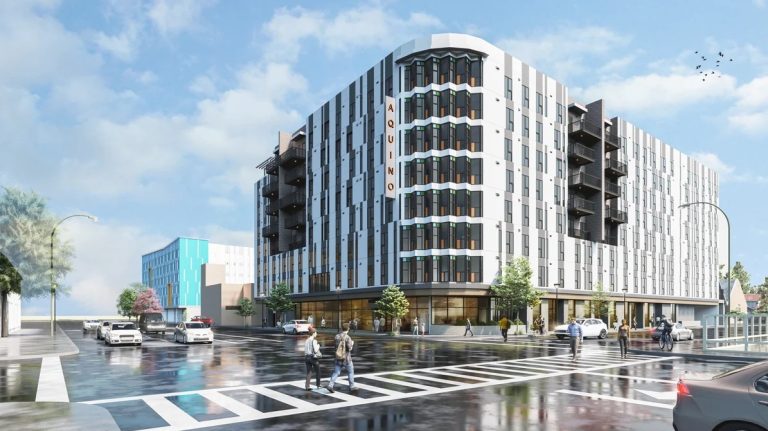On almost any given day, abandoned shopping carts can be seen cluttering San Jose streets, clogging waterways or littering parks with some 2,000 retrieved every year.
San Jose leaders have finally had enough and are eyeing police reforms to tackle one of its most visible blight offenders — from exploring a potential cart retrieval program to changing the toothless city code to chip away at the problem and recover costs.
“It actually literally erodes people’s confidence in city government and their trust in government, so I do think there’s a lot at stake here,” said San Jose Mayor Matt Mahan, noting he personally has fished dozens of carts out of waterways. “I don’t think we can comply with our stormwater permit and be in good standing with the Clean Water Act unless we get a handle on this issue. I don’t think we can change public perceptions of blight as long as we have 2,000 carts a year going missing and ending up all over the street.”
San Jose municipal code requires retailers with 26 or more carts to submit a prevention plan to the city annually that outlines reasonable efforts to prevent carts from being stolen and retrieve them when removed from their property.
Along with paying a fee of $2,126, retailers must show their loss prevention measures like using wheel locks or deploying security guards. Carts must also include signage that identifies the owner.
San Jose has issued 166 citations for noncompliance with cart plans, totaling nearly $39,000, since the 2023-2024 fiscal year, according to Rachel Roberts, deputy director of code enforcement.
But despite 134 retailers submitting cart management plans, the city does not have a dedicated service to pick up carts or respond to complaints. Add in current state restrictions, city officials said, and San Jose will be hard-pressed to recover all its costs.
If San Jose were to implement a mandatory cost recovery program, the city would also need to operate an impound lot that would impose several burdensome regulations.
The city currently brings carts to the Mabury Service Yard, just northwest of Watson Park, but it is nearing capacity. Once its full, the city would need to spend additional money and manpower to set up and operate another location.
State law also limits cost recovery efforts by requiring the city to provide a three-day window for retailers to pick up their carts without charge and then caps fines at $50 per day, regardless of how many carts they recover, said Peter Hamilton, assistant to the city manager.
Hamilton said there was no guarantee that the program would fully recover costs without changes to state law. Should San Jose want to seek changes to state law, Hamilton said advocacy efforts would likely focus on eliminating the requirement to operate an impound lot and three-day pickup window to allow cities to recover costs for every cart.
In a letter to Mahan, the California Grocers Association expressed opposition to changing state law, noting that additional costs and fees would hurt grocers in the lower economic areas the most and could be passed onto consumers.
“Any increased cost to grocers results in higher costs to operate, which often finds itself increasing prices,” wrote Tim James, local government relations director at the California Grocers Association.
But should the law remain unchanged, there may be some local changes that could help provide a solution.
City officials are contemplating adding teeth to the municipal code to add greater accountability measures for retailers and cart thieves. Among the proposed changes — requiring stronger loss prevention strategies and adding the ability to assign penalties for unlawfully removing shopping carts.
James warned that adding requirements like wheel locking mechanisms was not a panacea because if they were 100% effective, there would not be a shopping cart problem.
“Every store experiences a different level of cart theft, and that’s based on a lot of the demographics in the area and whatnot,” James said. “Those systems are very good at preventing what I would call a respectful thief, somebody that’s going to respond to that. But somebody who’s motivated can easily defeat those systems even by continuing to push the cart.”
Meanwhile, with San Jose’s current options limited as far as recovering costs, it may look to emulate some of Milpitas’ successes in implementing its retrieval programs.
San Jose is considering a cart retrieval pilot program this year that piggybacks on an existing contract bid through another public agency.
Milpitas, for example, has a contract with RMS, Inc. where it pays $11 per shopping cart retrieved. Milpitas also has a voluntary cart retrieval program where retailers can opt-in and the city bills them for the costs. Businesses that do not participate can still recover their carts at an impound lot but must pay a higher fee if they do not pick up the carts within three days.
Related Articles
Santa Clara County opts not to ban artificial turf on county-owned properties
Why are there so many data centers in Santa Clara?
Anthony Becker says he will appeal — how will he argue his conviction should be thrown out?
Santa Clara officials say 2026 FIFA World Cup is ‘highly likely’ to be a money loser
Santa Clara Vice Mayor Anthony Becker resigns after being found guilty of 49ers report leak, perjury
Milpitas has also integrated its cart retrieval service into its MyMilpitas app – a feature San Jose city officials would like to see become part of SJ311 once its cart program is up and running.
“Not every contributing nuisance in our city rises to having its own button on 311, but I do think that the shopping carts do and, especially if we can look to our neighbors in Milpitas for a great idea and vendor ready and willing to step forward to do that,” District 6 Councilmember Michael Mulcahy said.












